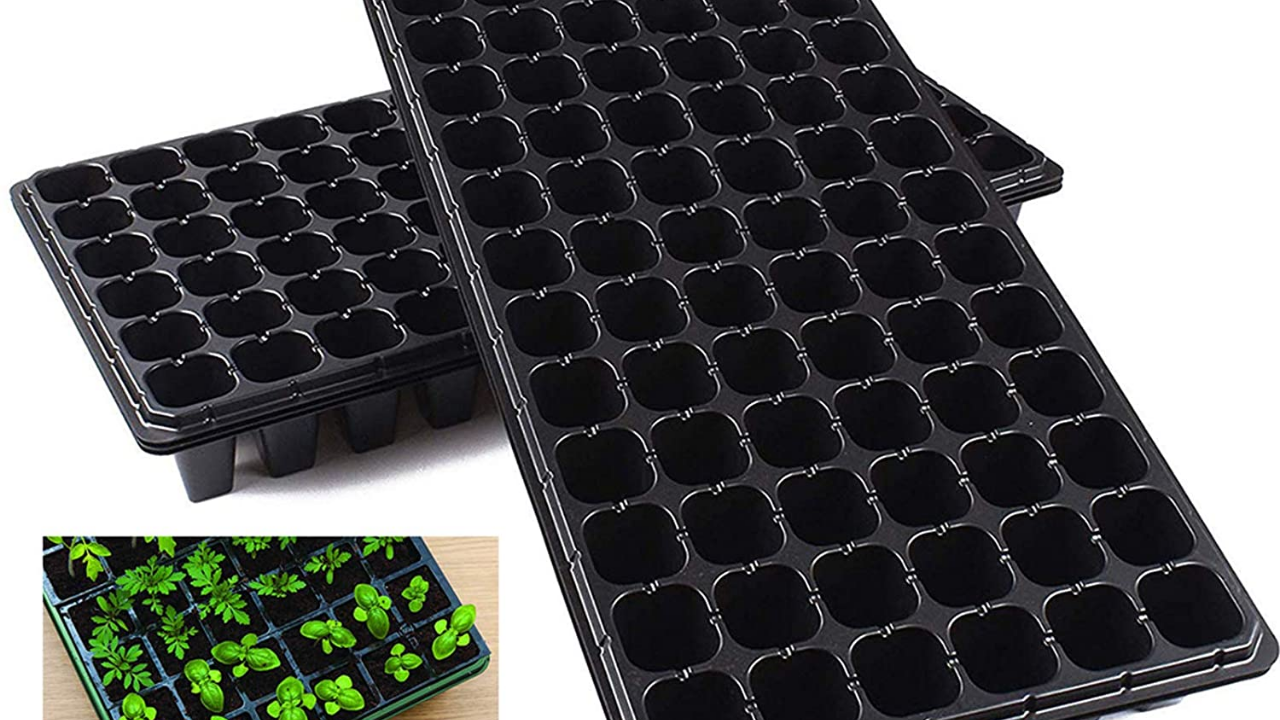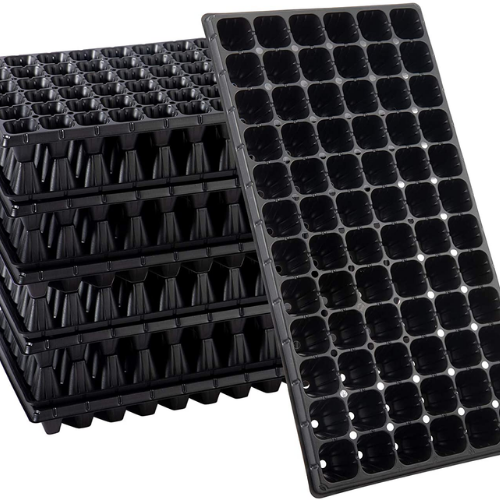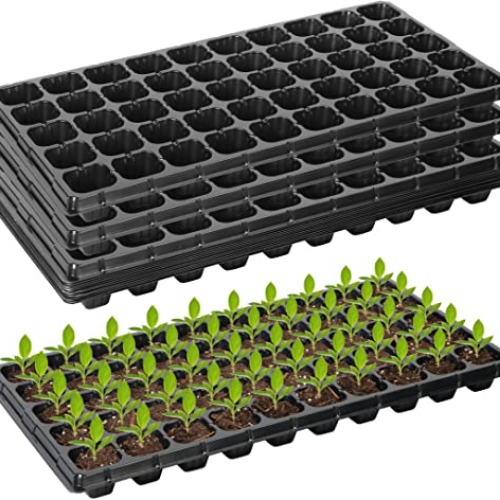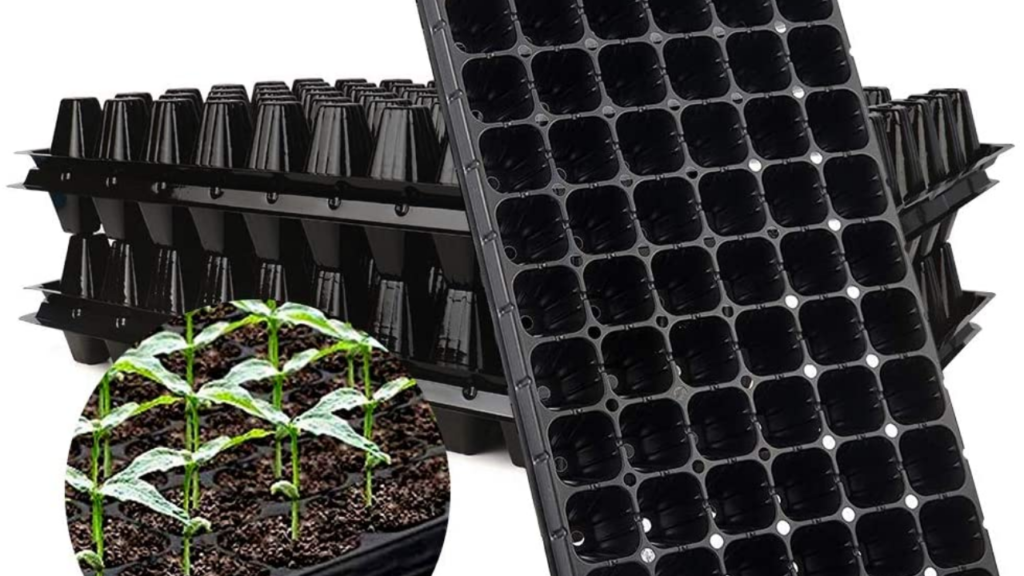Blog
Seedling Trays for Sale in Kenya

Aqua hub provides seedling trays for sale in Kenya. We have high-quality seedling trays to meet your propagation needs, including seeds and cuttings. Growing your own plants from seed often results in healthier plants at a lower cost. If you want to start seeds in bulk, a seedling tray may be useful to aid germination. Of course, there are numerous options for the material, tray type, and number of cells when selecting a seed tray. Our planting trays are available in a range of colors and shapes, including black and white, although the most frequent tray color is black.
What are seedling trays?
A seed tray is a container for planting several seeds at the same time. A seed tray is a container that allows you to sow several seeds in one container. This makes watering and transporting them much easier. The seed tray retains seedlings as they grow until they are ready for transplant outside or into larger pots once the seeds germinate.

Foldable plastic material is applicable to make seedling trays or seed trays. The trays have cells (holes) all over them. Sowing media such as soil, coco peat, or sand should be applicable to fill these cells. You can place 2-3 seeds in each cell, depending on the type of plant. As the seeds germinate, the watering of the trays should be on a regular basis. The storage of young seedlings can be safe in these trays for 3-4 weeks in semi-shade until they are ready for transfer to the field or larger pots.
Reasons for Seedling trays
You may manage the environment in which seeds develop by growing them in paper pots, modules, or seedling trays. Protection from the outdoors and garden pests, as well as control over soil, moisture, fertility, and heat. This is especially crucial if you want to get a head start on your growing season.
The trays are long-lasting and reusable, and there are no holes in the bottom, so there will be no water leaks. The trays are very beneficial for soaking germinating seeds’ cells from below. This keeps the seedlings from being disturbed and ensures that they get enough water.
Seedling trays, in a nutshell, increase output while conserving time, money, water, fertilizers, and land area. Seedlings cultivated in trays are healthy, and the tray allows for simple handling of fragile seedlings during transplantation. It enables your plants to develop quickly and with little effort.
Aqua Hub’s Seedling trays
Seedling trays come in a number of sizes. Cell counts for seed trays that are commonly applicable are as follows:

- 24 cell seedling trays.
- 28 cell seedling trays.
- 32 cell seedling trays.
- 50 cell seedling trays.
- 66 cell seedling trays.
- 100 cell seedling trays.
- 160 cell seedling trays.
- 200 cell seedling trays.
- 204 cell seedling trays.
- 288 cell seedling trays.
What is the depth of a seedling tray?
A typical seed tray is 2 to 2.5 inches deep. Cells deeper than 3 inches are unlikely to be required. Different planting media can be applicable in your planting trays. This is a special medium/material in which your seeds grow. We have various types of solid medium;
(i) Cocopeat
(ii) Peat moss
(iii) Vermiculate
What are the parts of a seedling tray?
Tray: This is the component that contains soil, individual containers (pots), or a cell flat on the outside. The tray is applicable for watering from below when used with a cell flat.

Cell flat (plug flat): This is the inner component, which is optional. To separate seeds from one another, place a cell flat within a tray.
How Many Seeds Do You Put In A Seed Tray?
Seed kind: The spacing is affected by the type of seed you plant, and it might vary a lot! When growing microgreens, for example, seeds can be planted very close together (1/8 to 14 inch apart) on a tray without a cell flat within. Tomato seeds, on the other hand, may be spaced 2.5 inches apart to allow seedlings to develop without their roots becoming tangled. Seeds that have been pelleted are also bigger than seeds that have not been pelleted.
Size of the tray: The bigger the tray, the more seeds you can fit in it. You can plant seeds closer together if you don’t use a cell flat, but you risk the roots becoming tangled. This raises the risk of transplant shock in the future.
Cell size: More cells on a tray equals smaller cells in a cell flat. Smaller cells, on the other hand, give less room for seedlings to grow, so you’ll have to transfer them sooner.
Germination rate: If your seeds are old, they may have a poor germination rate. In that situation, you might choose to plant more than one seed in each cell or arrange the seeds in a tray near together.
Where should I buy seedling trays in Kenya?
For your propagation needs, Aqua Hub stocks and supplies high-quality seedling trays in Kenya. Planting trays can be purchased at any of our locations or delivered to you via courier of your choosing.
